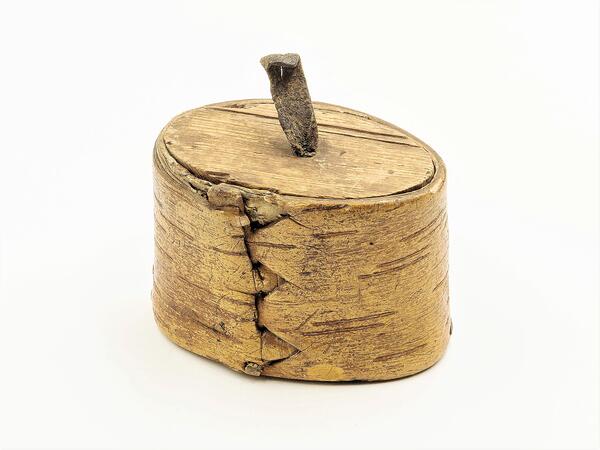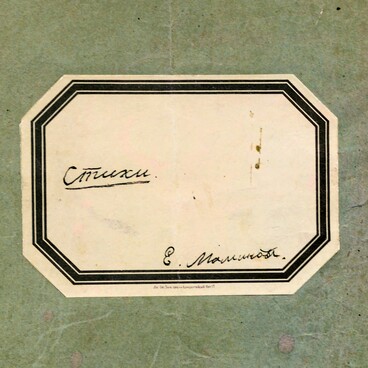The collection of the museum contains a tuyesok — a small container made of birch bark. Dmitry Mamin-Sibiryak kept tobacco in it. The writer smoked a lot and gathered a collection of 12 smoking pipes, one of which is displayed at the exhibition.
Researchers speculate that the word “tuyes” came from the Finno-Ugric word “tuy”, which meant a road. Mamin-Sibiryak was fond of the history of the Urals, so he often went on archaeological, geological and ethnographic expeditions. So that the tobacco would not get wet in the field, he carried it in similar cases and boxes.
The birch-bark baskets were made manually from “kap” — a solid piece of birch bark. The upper and lower edges were bent, forming a bowl. After that, the master put on top an outer layer of birch bark, which was called a “shirt”. The container was richly decorated with decorative elements in the technique of embossing, embroidery or slitting.
In Russia, birch-bark baskets were distinguished by size and purpose: there were both small boxes, boxes of a palm size, and capacious containers of 20-30 centimeters high. In the huts, they kept bulk and liquid products: sugar, salt, flour, kvass or tea.
Birch bark tuyesok was often taken with them on hunting trips or to mine for gold and rock: at home they were filled with milk, cottage cheese, salted fish or mushrooms. Because of the multi-layered body, the vessel retained its temperature well, and the food in it remained fresh for a long time. Moreover, the birch bark created an airtight environment without bacteria, so even a wet tuyesok did not rot.
Snuffboxes made of birch bark were often used during his travels. The snuffbox in the collection of the house-museum is oval in shape and compact in size: it was 5.5 centimeters long and 7.5 centimeters wide. It could easily fit in a trousers or jacket pocket.
People used to put a removable wooden lid with a finger peg on top to prevent tobacco from falling out of a tuyesok. Along the bottom edge of the snuff-box wooden pegs were driven in every 1-1,5 centimeters. They bind the parts of the structure together.
Nowadays, birch-bark containers have almost ceased to be used. They can only be seen as museum pieces.
Researchers speculate that the word “tuyes” came from the Finno-Ugric word “tuy”, which meant a road. Mamin-Sibiryak was fond of the history of the Urals, so he often went on archaeological, geological and ethnographic expeditions. So that the tobacco would not get wet in the field, he carried it in similar cases and boxes.
The birch-bark baskets were made manually from “kap” — a solid piece of birch bark. The upper and lower edges were bent, forming a bowl. After that, the master put on top an outer layer of birch bark, which was called a “shirt”. The container was richly decorated with decorative elements in the technique of embossing, embroidery or slitting.
In Russia, birch-bark baskets were distinguished by size and purpose: there were both small boxes, boxes of a palm size, and capacious containers of 20-30 centimeters high. In the huts, they kept bulk and liquid products: sugar, salt, flour, kvass or tea.
Birch bark tuyesok was often taken with them on hunting trips or to mine for gold and rock: at home they were filled with milk, cottage cheese, salted fish or mushrooms. Because of the multi-layered body, the vessel retained its temperature well, and the food in it remained fresh for a long time. Moreover, the birch bark created an airtight environment without bacteria, so even a wet tuyesok did not rot.
Snuffboxes made of birch bark were often used during his travels. The snuffbox in the collection of the house-museum is oval in shape and compact in size: it was 5.5 centimeters long and 7.5 centimeters wide. It could easily fit in a trousers or jacket pocket.
People used to put a removable wooden lid with a finger peg on top to prevent tobacco from falling out of a tuyesok. Along the bottom edge of the snuff-box wooden pegs were driven in every 1-1,5 centimeters. They bind the parts of the structure together.
Nowadays, birch-bark containers have almost ceased to be used. They can only be seen as museum pieces.



